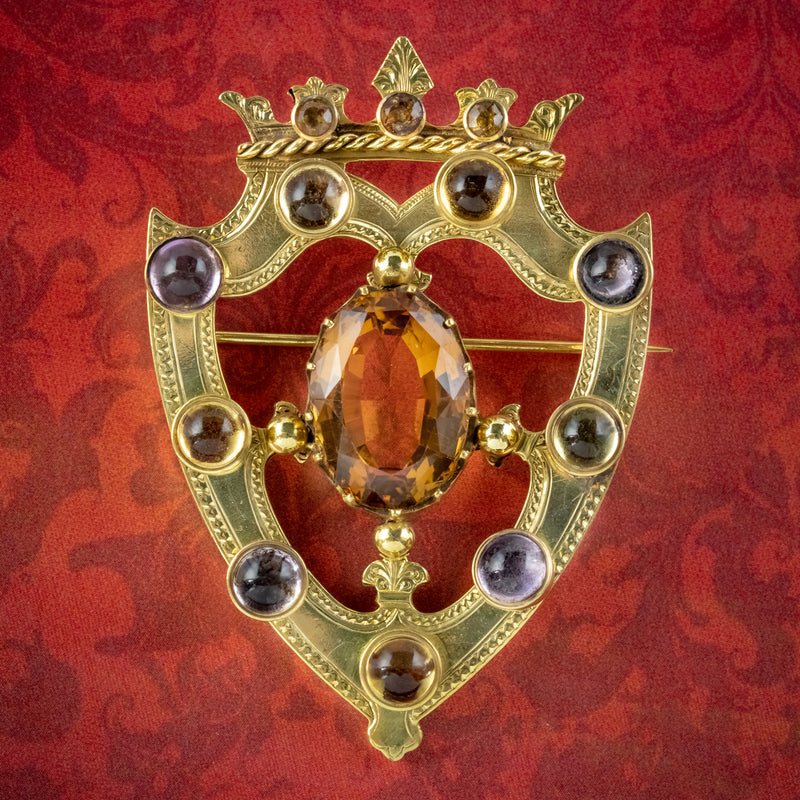1860-80: Antique Victorian deals Scottish Thistle Pin- Old Sheffield Plate & Glass Cairngorm (1.65”)
This is an antique Scottish Thistle Pin, created between 1860-1880. This ancient design incorporates a magnificent faceted glass Cairngorm. The Cairngorm is a type of citrine found only in the Scottish Highlands. This natural gemstone was popularized by the trend setting Queen Victoria who loved all things Scottish (particularly their traditional jewelry). The color of this glass stone is actually an exact match to the natural stone. It sparkles beautifully in the light.
The Cairngorm is prong set in a substantial dimensional setting. This setting is supported by a wreath of Scottish Thistles. These Thistles are depicted in an interesting folkloric style, absolutely Antique Victorian. Beautifully crafted, the pin has all the elements expected of traditional Scottish design.
This antique pin would be a stunning accessory used as a clasp with a cape or shawl or the perfect gift for those who appreciate antique Celtic design. It really is quite lovely.
Naturally, it could be worn as a fly-plaid pin at the shoulder of a formal kilt. The fly plaid was introduced into traditional Scottish attire in the 18th century. The fly plaid replaced that portion of the Great Kilt that was draped over the shoulder. It is always worn in the same tartan or colour as the kilt.
The pin measures 1.65”, is in magnificent condition and is finished with a traditional C-Clasp and tube hinge.
It is hallmarked EPNS, indicating is was crafted in Sheffield, England sometime between 1860-1880. deals
The letters stand for, Electro Plated Nickel Silver which in older designs is often called Old Sheffield Plate. Old Sheffield Plate came about in the middle of the 18th century and was used as an alternative to solid silver.
The story of the Scottish Thistle:
The Thistle is a resilient weed and has always bloomed across Scotland's landscape...
One of the best-known thistle legends takes place in the mid 13th century during a surprise invasion by the soldiers of the Norse king, Haakon, at Largs (one of western Scotland's coastal towns).
The story has it that after coming ashore, this Viking force planned to creep up on the Scottish Clansmen and Highlanders and overcome them while they slept.
Unfortunately for these unwary invaders, one of their soldiers bare feet came down hard on a Scottish thistle and his cries of shock and pain were enough to wake the sleeping Scots.
This amount of stealth required that they go barefoot - which proved to be their undoing. Leaping to their feet, the clansmen charged into battle and the rest, as they say, is history... and yes, the fiery Scots were victorious.
About EPNS:
The production of Old Sheffield Plate involves taking a thick sheet of copper and a thin sheet of silver, rolling the two together through heavy-duty rollers and repeating this until the two fuse together. The silver on the copper sheet is left wafer thin, this large, thin sheet of Old Sheffield Plate is then ready to be used by the silversmith.
Please review the photos carefully and email with any questions you may have prior to making a purchase.
Enjoy.





